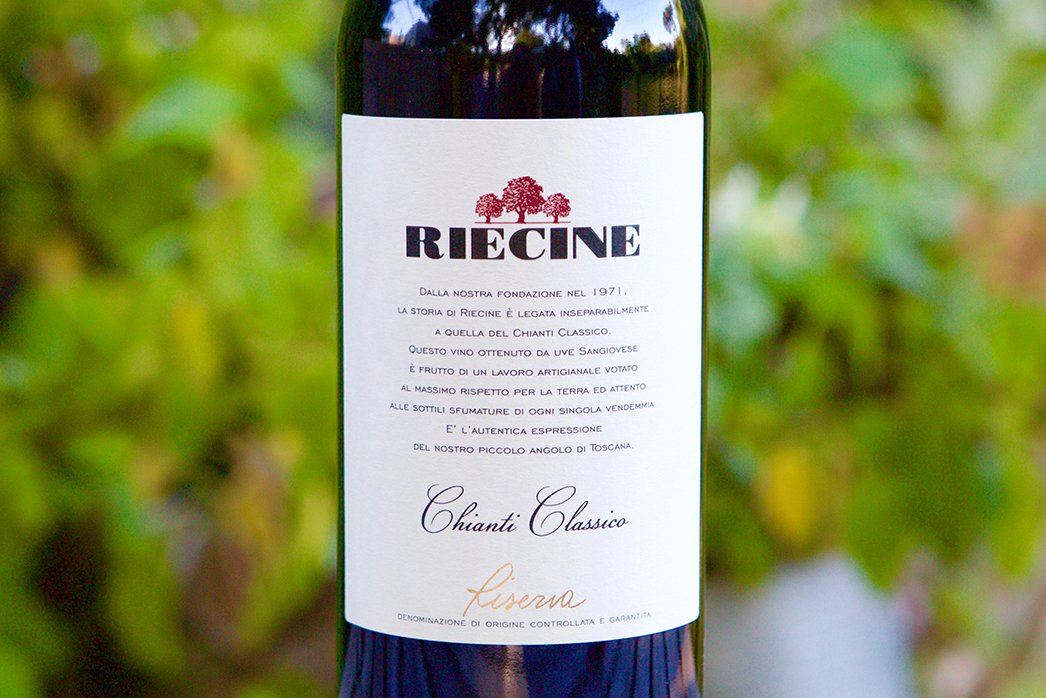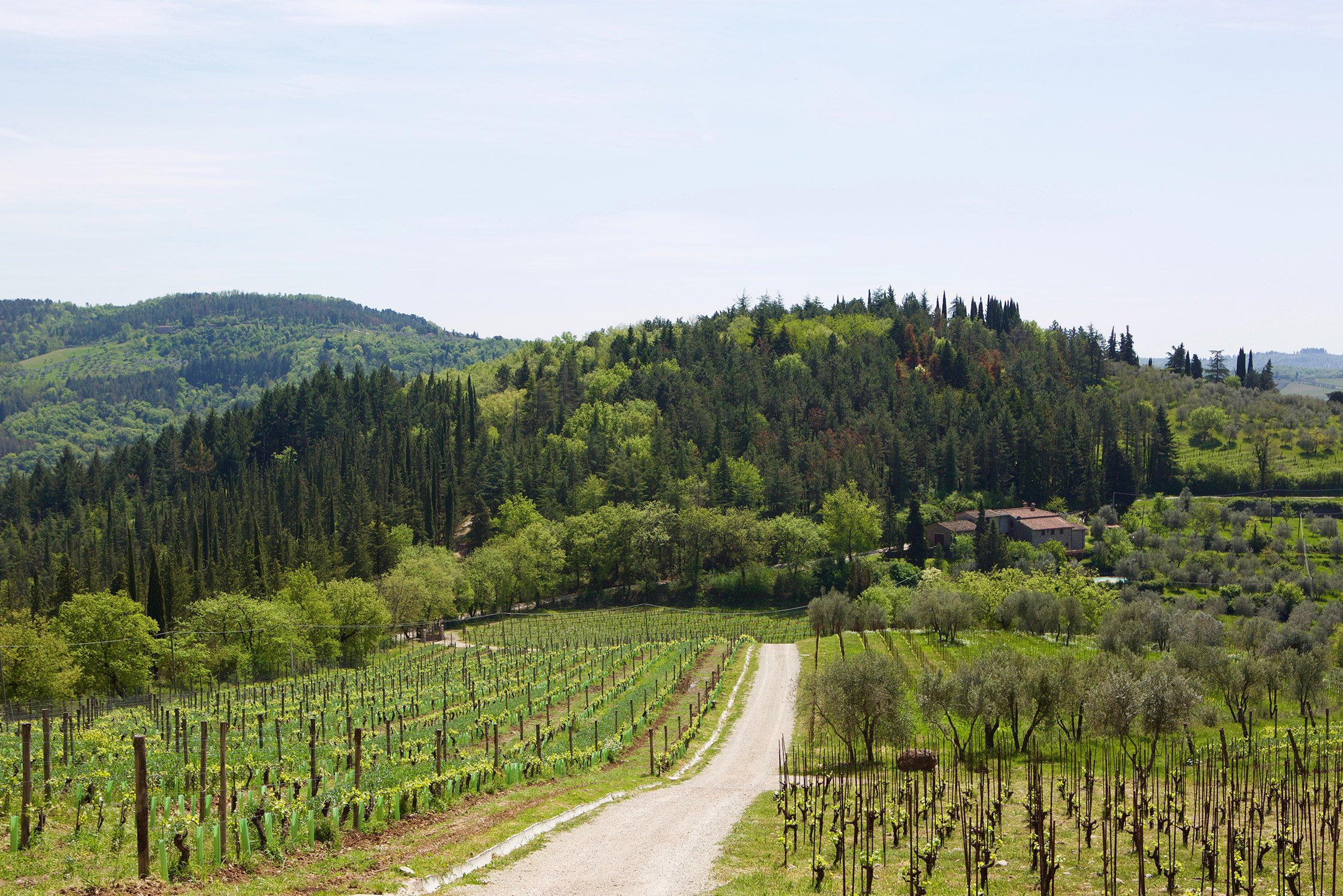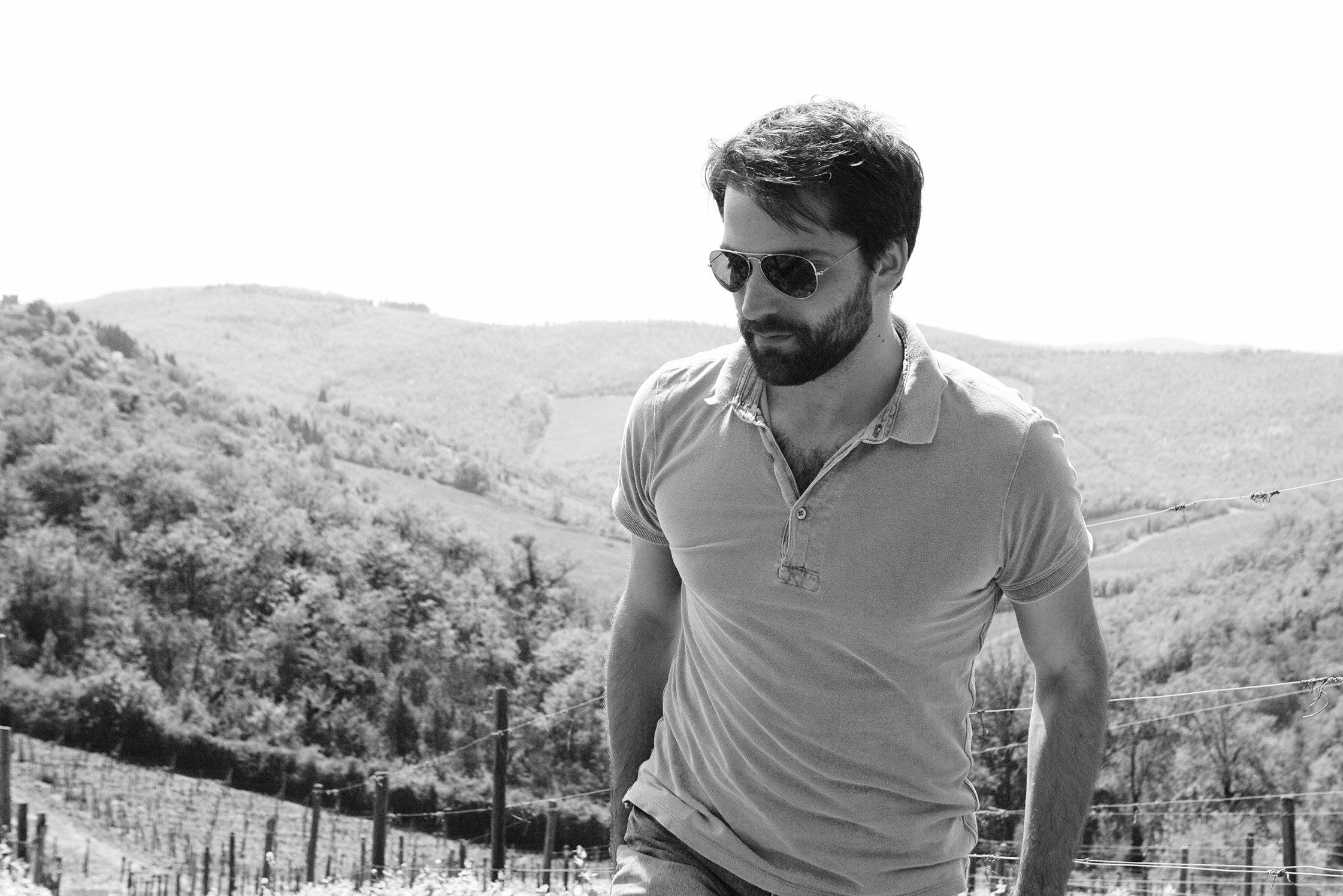If you have interest in Italian wines, particularly those from Tuscany, Riecine could be a worthwhile consideration for you. The style of the wines at Riecine wear many faces, from the elegant and lifted Chianti Classico, the more savory and deep Chianti Classico Riserva, the unapologetically top-heavy red fruited, full-throttle Sangiovese, La Gioia, and the most dainty and Burgundian of the pack, Riecine di Riecine—the latter is scheduled to arrive later in the year.During my first visit to the estate I was quite surprised by what I tasted. Fortunately we walked in the door at a change of guard, and while the wines before today’s vintages were also very good, it seems that things are taking an even bigger uptick in overall quality.
Further below is a short story of what is happening these days at the cantina and some of my thoughts on the wines. If you have any questions about Riecine or any of our other producers, please send us an email and we can set up a time to talk about wine, a subject we never get tired of talking about.
Riecine: Rewinding The Clock And Moving Forward
Since the passing of Riecine’s founders, the Englishman, John Dunkley, and his Italian wife, Palmina Abbagnano, Riecine has now cycled through a few different owners. In 2015, a young and talented Italian enologist named Alessandro Campatelli (pictured) took charge with full support on his vision from the newest owners. His mission was to bring back the spirit of these historic Chianti Classico wines that began with the 1973 vintage made by Dunkley and his then enologist, Carlo Ferrini. Ferrini has since become one of the biggest names in Italian wine and Alessandro’s first order of business was to enlist him to achieve this goal.
Dunkley passed away in 1996, and Ferrini decided to move on to more personal projects and consulting opportunities the following year. Surprised by the invitation to return, he hadn’t been back to Riecine since the day he resigned, and Alessandro said that upon arrival he had tears in his eyes, explaining, “John and Palmina were like Ferrini’s second parents. It was a great moment to have him back.”
Riecine’s organically farmed vineyards (since the 1970s) are in the northern zone of Gaiole in Chianti, one of the highest quality communes of Chianti Classico. In the south of Gaiole, the vineyards are much lower in elevation, and the soil is less rocky than in the north. Almost entirely different from the lower area of Gaiole, the northern zone shares similar high altitudes—430 to 600 meters—to the vineyards of Radda in Chianti. This impacts the overall growing season, and results in higher-toned flavors, acidic snap and finely etched textures. Perhaps one of the most notable differences between these two fabulous Chianti Classico zones is that Radda has more galestro (a decomposed schistous clay soil with a very high pH that seems to impart more angular dimensions to its wines) while the upper areas of Gaiole, where the Riecine vineyards are located, is principally on limestone and clay, which imparts more roundness and fuller flavors to balance out the freshness of the wines.
The Wines
We know all too well that the constant comparison of wines outside of Burgundy to Burgundy is exhausting and overextended. However, a few of Riecine’s wines, particularly the Chianti Classico and the Riecine di Riecine, are far to this side of the spectrum for Chianti Classico. Not only do these two Riecine wines often feel close to Burgundy in the palate, they can smell and taste like Burgundies grown at high altitudes, particularly those premier crus above grand crus, or even some sections of rockier grand cru sites themselves. Believe it or not, some wines from Riecine have duped many skilled wine tasters into believing they were Burgundy before unveiling the wines; many of these occurrences happened during blind tastings that I conducted. By contrast, Riecine’s Riserva Chianti Classico is more of what one expects from the appellation, and even further out on its own is La Gioia, something of an impact wine that demonstrates how far the wines can be stretched.
The first level Chianti Classico is well above the cut for the price and value. Fruit forward with a seamless and refined texture, it’s serious Sangiovese but with glou glou immediacy upon pulling the cork. Not solely a one-trick pleasure pony, the wine has extra gears and demonstrates its versatility and depth with more aeration (if it can be resisted long enough). More classically savory characteristics of Chianti Classico begin to unfold with time open in its youth and surely with more maturation in the cellar, and are supported with the acidic snap from its high altitude and endowed with a sappy red fruit core. This limestone and clay vineyard Chianti Classico is aged in large old oak barrels to further highlight its purity and high-toned frequency. (Reviews if you’re curious: 2018 received 99 points from perhaps an extremely overenthusiastic Italian wine critic, Luca Gardini; 92 points from both the Wine Enthusiast and James Suckling.)
The Chianti Classico Riserva from Riecine is far more deep and savory than their lifted and elegant Chianti Classico. Between the ages of twenty-five and forty years old, the vines used for the Riserva are older and the wines are aged for twenty months in large, old oak barrels—the first wine, spends fourteen months in large, old French oak barrels and Grenier casks, and are from vines that are more than twenty years old. Grown also on limestone and clay, which, along with the older vines, imparts more roundness and an even fuller mouthfeel. At a tasting in Los Angeles with the most discerning palates from many of the city’s top Italian restaurant sommeliers and wine buyers, the merits of this wine were immediately evident and were a true highlight with the more traditionally-minded Italian wine buyers. Indeed it will age well in the cellar, but it can also be enjoyed early; just give it a little air before diving in, and know that it’s best drunk with a meal—just like every traditionally made Chianti Classico. (Luca Gardini 2017 Riserva: 98 points. I guess he more than just likes these guys…)
La Gioia is one of Tuscany’s seminal IGT successes with its inaugural 1982 vintage, designated as a “Vino da Tavola di Toscana”. In 1982 the mix was 85% Sangiovese and 15% Merlot. As it has been since the 2006 vintage, it is now 100% Sangiovese. (The historic Riecine Merlot vines are used for the Tresette label, an extremely interesting wine with big-time chops for the long haul—if the market was still interested in Merlot!) Designed in the cellar for the long haul, La Gioia is aged for thirty months in a mixture of new, second and third year 500-liter French oak barrels. Clearly it’s not the same type of wine as Riecine’s Chianti Classico or Riserva since it’s notably more flamboyant and unapologetically full, decadent and loaded with flavor. It’s my experience that sometimes the wine leads with oakier nuances and needs a bit of time to get around it, which it will; then there are times the oak is hardly noticeable at all, save some textural components. Clearly this wine is alive and always on the move. For those looking for rarities/collectibles, this is one that should be considered; even we get very few bottles. It will live a long life and show quite well, as the mini-vertical of the 1982-1985 did only a month ago at a tasting in Riecine’s cellar of all the wines produced from 1971 to 1985; sadly I was not there for that tasting, but received some pictures of the event… (Accolades/Reviews for 2015: 95 points by both James Suckling and Germany’s Falstaff Wein)
Riecine di Riecine transcends the appellation as a singular expression of Sangiovese unlike anything I’ve found elsewhere in the Chianti hills. It can test one’s notions of high-end, blue chip European wines—particularly those from Burgundy, and my first taste of the 2013 vintage, with the wine and food writer, Jordan Mackay, did exactly that. We were perplexed because in our Zalto glasses was a wine that evoked the feeling of high-altitude red Burgundy from a shallow and rocky limestone and clay topsoil on limestone bedrock. Poured from a Burgundy-shaped bottle, the wine was supple but finely delineated with high-tension fruit, earth, mineral impressions and a sappy interior. Its beguiling aromas were delicate but effusive, and very Rousseau-esque, in a higher-altitude-sort-of-way (think Rouchottes-Chambertin, without the bludgeon of new oak upon first pulling the cork from that wiry juggernaut of the Côte d’Or). Like a Burgundy, this wine is in fact grown on rocky limestone and clay topsoil with limestone bedrock, and at a high altitude of 450-500 meters, so about 200 to 250 meters higher than the majority of the Côte d’Or’s most prized sites. To preserve the wine’s purity, it’s raised in concrete egg tanks for three years, which serves this wine well—not all wines of pedigree can thrive so well raised solely in concrete. The vines planted in the early 1970s further its suppleness and complexity, and concentrate its fresh red fruit characteristics. This wine is special, and with a vintage like 2016, it’s not one to pass on if your budget has room for at least a bottle to give it a try. (2016 Review: Suckling 94… Not bad, but if he gave 2015 La Gioia 95 points, this should be at least a 96. But to taste it next to La Gioia it can easily appear less substantial because it’s fine and more subtle. We find it substantial in a different way, a more Burgundian way.)





